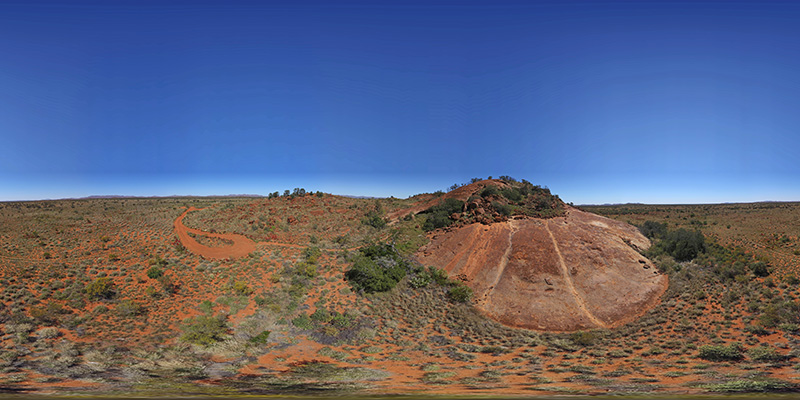Fun with a droneWritten by Paul BourkeFebruary 2015
Phantom 2
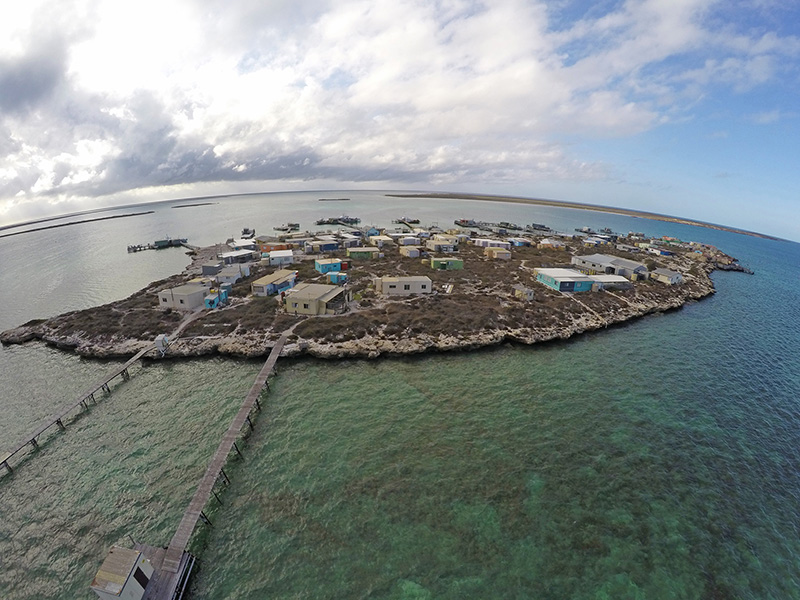 Pigeon Island
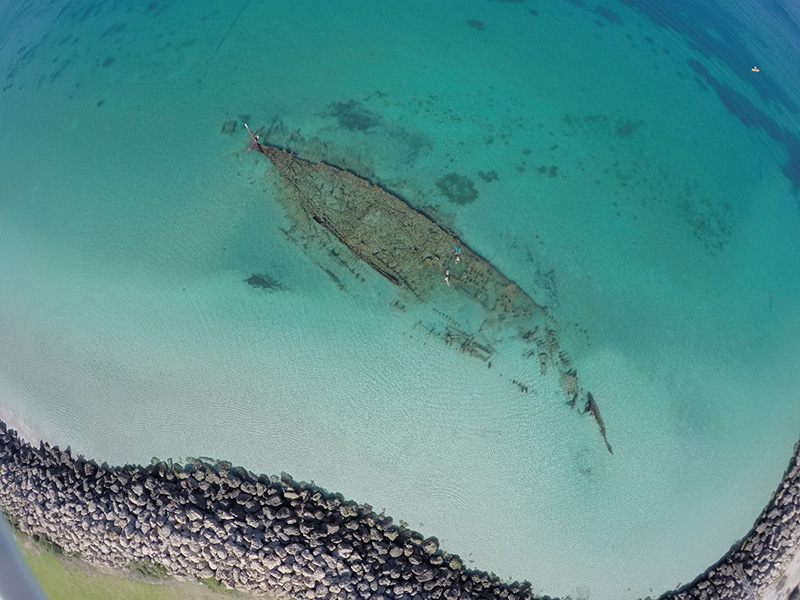 Omeo wreck, Coogee Beach South Fremantle
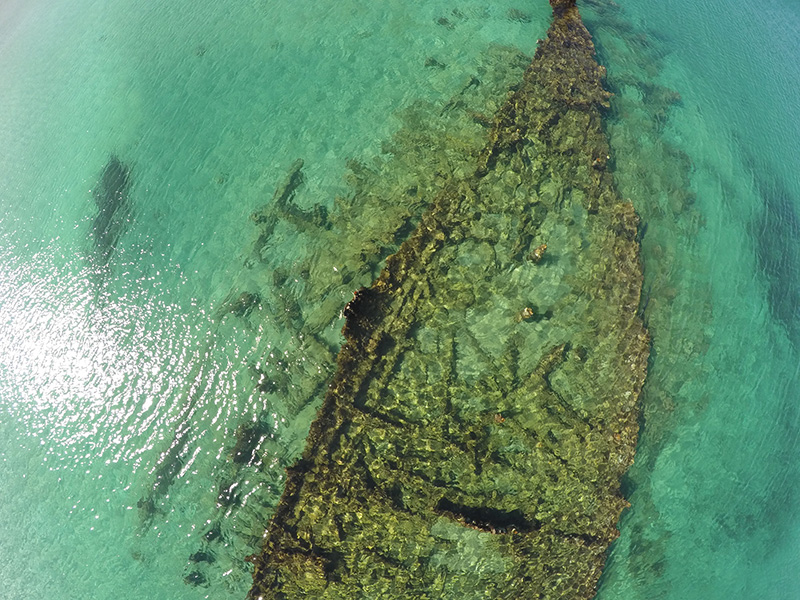 Omeo wreck, Coogee Beach South Fremantle
 Wellington Square (360 degree panorama. 11,000 pixels wide) Normally little planet images are created using a tripod and a little PhotoShop magic to edit over the position directly below the camera. With a drone there is of course no tripod required and the down pointing imagery can be captured unencumbered. 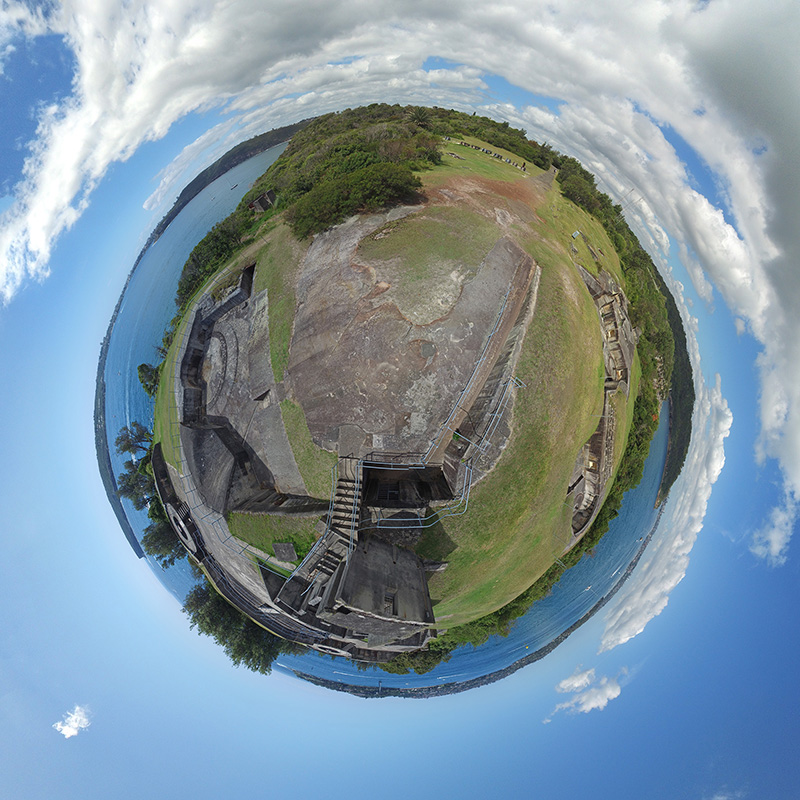 Sydney Middle Head
These are formed from typically 100 photographs and stitched/blended into a spherical (equirectangular) projection. While one could present these in their normal form, the south pole looks distorted (the interesting part) and the drone only captures below the rotor line. So the best way is as downwards looking fisheye. It turns out that one can capture more than 180 degrees, 220 was chosen in the above examples although I dare say someone with the appropriate skills could probably fill in the sky for a full spherical image. Stitching errors are modest despite the bird not being entirely stable in a breeze. 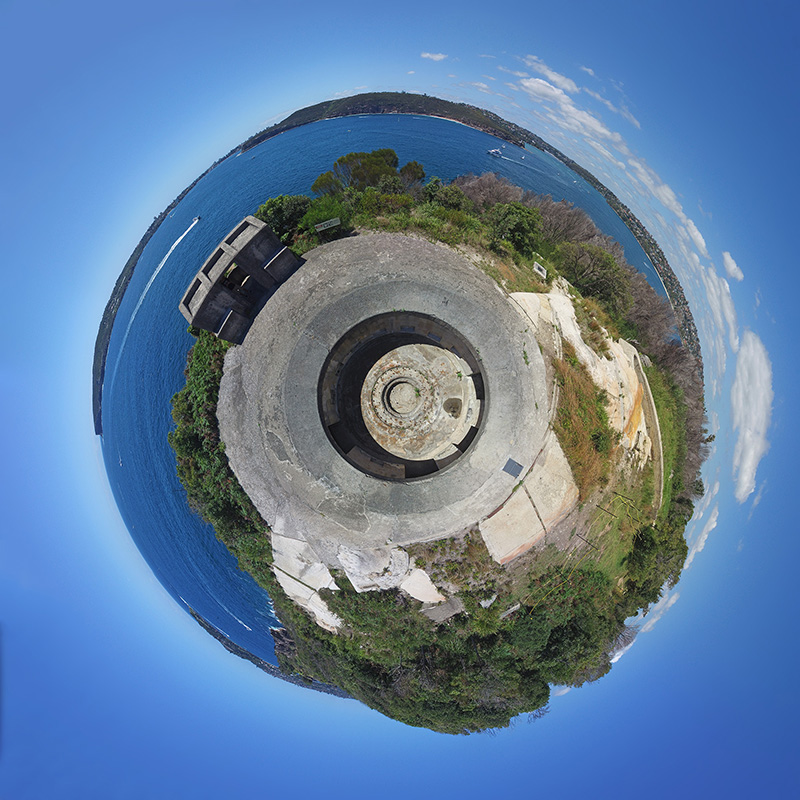
The native resolution of the spherical panoramas is about 16000x8000 pixels. Since the camera/lens on the Inspire cannot be zoomed, this is the upper limit of the resolution one can achieve. 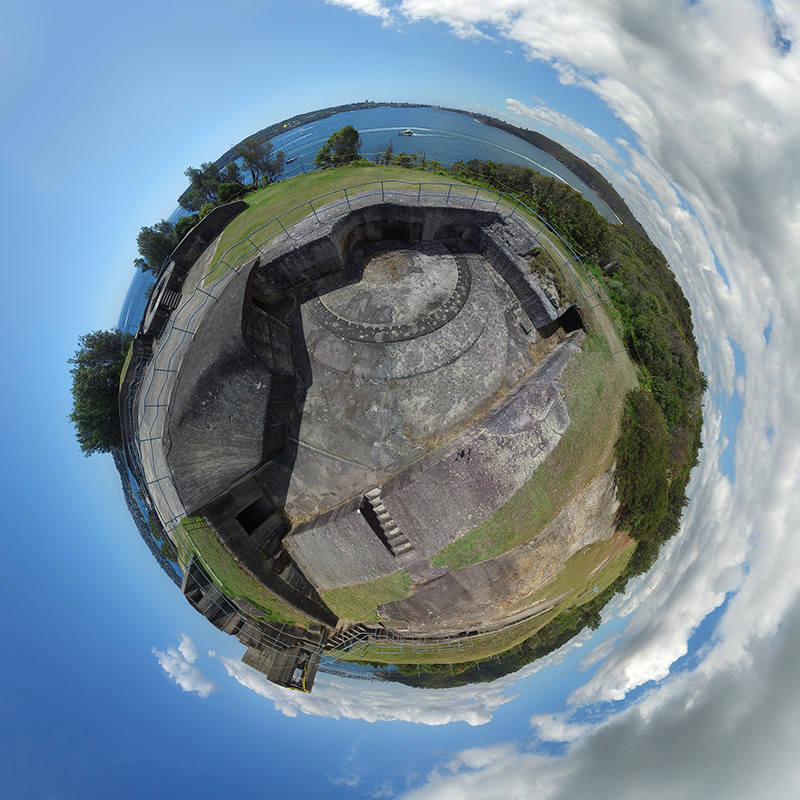
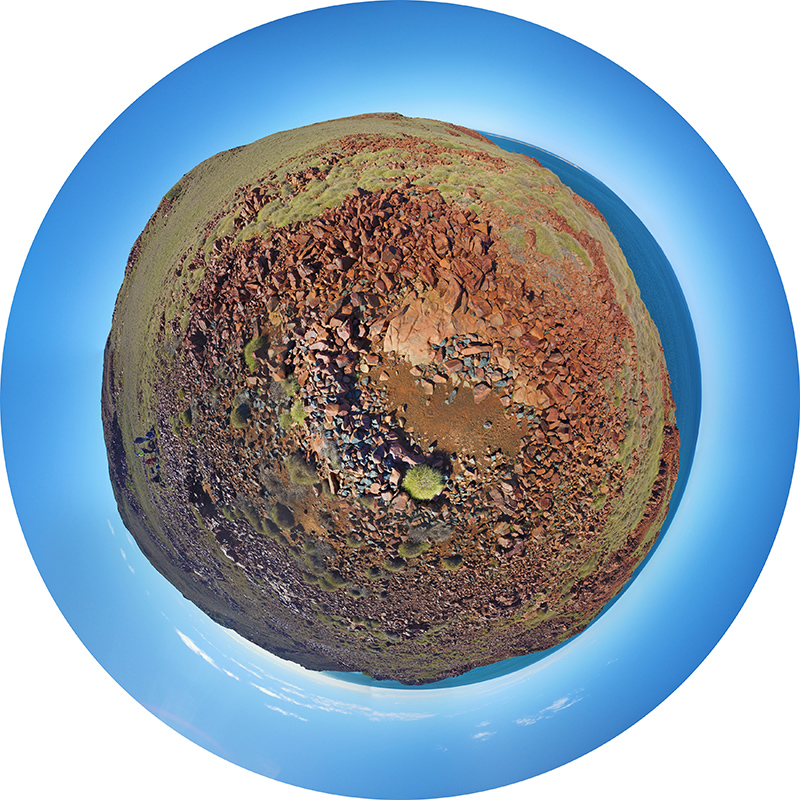

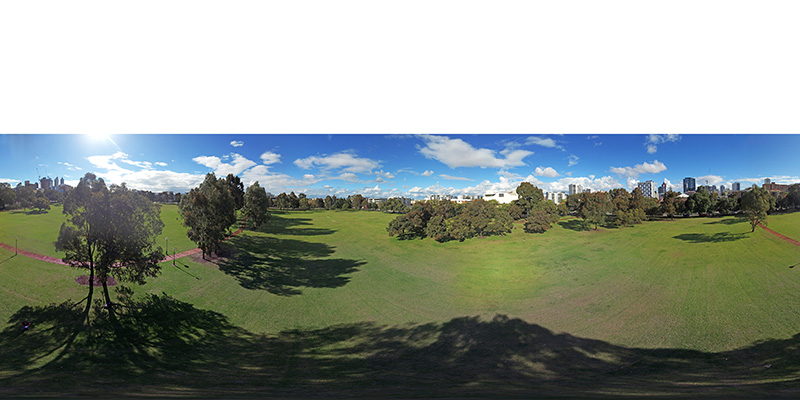
The Inspire 1 when used to create equirectangular panoramas in limited to about 120 degrees vertically, before the landing gear legs become visible. Given the fixed zoom of the camera, the native resolution of a panorama is limited to about 15,000 pixels. The usual way of filling in the top is to capture a separate fisheye shot from the ground looking directly upwards, transform that into the correct portion of an equirectanglar projection and blending across the sky or horizon. Full 360x180 panoramas
|
